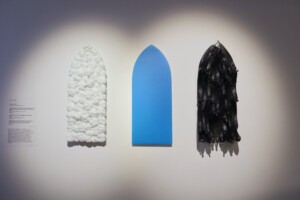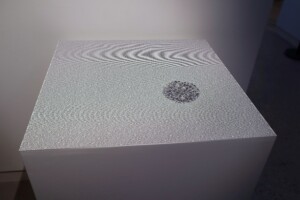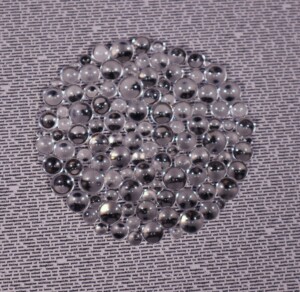Q&A with the Curator: American Studio Glass at the CAT Museum
Two new exhibitions now open at the Cafesjian Art Trust Museum tell the story of American studio glass from its beginnings through today. From Origins to Horizons: The American Studio Glass Movement begins in the mid-1960s when ceramics professor Harvey Littleton hosted a series of workshops to experiment with blowing glass in a small, artist studio setting. The exhibition concludes with work created in the past five years from internationally known glass artists. Midwest Voices in Contemporary Glass, on display in the adjacent Focus Gallery, shows museum guests what artists in our very own region are creating today. In the interview below, Andy Schlauch, the CAT’s executive director and curator of the exhibitions, gives further insight into these exciting projects. From Origins to Horizons: The American Studio Glass Movement, and Midwest Voices in Contemporary Glass are on display at the CAT Museum through October 5th, 2024.
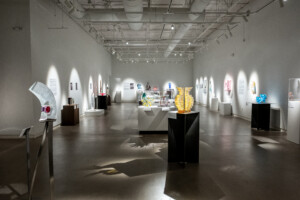
From Origins to Horizons: The American Studio Glass Movement
Q: Why did you want to organize an exhibition about the American Studio Glass Movement?
Andy Schlauch (AS): Since we have such a remarkable and deep collection of glass art, I wanted to develop an exhibition that provides a context for this uniquely American movement. There are so many great artists working in glass, and I hope our guests are intrigued to learn about it.
Q: Why did you decide to make Midwest Voices in Contemporary Glass a juried exhibition? What did that process look like?
AS: I like bringing other perspectives and voices into the conversation when it comes to the curatorial process. With a theme like Midwest Voices, we asked for artists to submit proposals from around this region of the United States. I thought a collective approach would open opportunities. I recruited two colleagues to select the work for the exhibition along with me: Alejandra Peña-Gutiérrez, director of the Weisman Art Museum, and Anna Lehner, executive director of Foci Minnesota Center for Glass Arts. We met, reviewed, and openly discussed every submission, then narrowed it down to 10 artists’ works we thought brought something interesting into the overall conversation about contemporary glass sculpture.
Q: Can you tell us about the jury’s selection of a winner and honorable mention in Midwest Voices in Contemporary Glass?
AS: It was incredibly tough! We deliberated for a few hours about the overall winner, and it came down to two artists. In the end, we felt the overall presentation of Davin Ebanks’ triptych Passages was well made, told us a compelling narrative, and was well thought out. Learning about the inequity and colonialism that is still persistent in the Caribbean was very eye opening. Abegael Uffelman’s Everyday was also incredibly compelling for different reasons. The fact that her piece is interactive draws the viewer in, and as you begin to decipher the text of microaggressions that artist has dealt with throughout her life, it causes you to pause and think about your own unconscious biases. So we felt Uffelman’s piece deserved an honorable mention.
Q: Why did you decide to host these two exhibitions concurrently?
AS: I liked the concept of showing the two exhibitions because one feels global, but the juried show feels very much local. If I put myself in a visitor’s shoes, I imagine myself seeing From Origins to Horizons and thinking, “I wonder if there is anything happening in glass near me?” So, I hope they’re encouraged by Midwest Voices to learn there is a strong community of glass art in this region.
Q: What is your favorite object in From Origins to Horizons and why?
AS: That’s a tough question. There are so many I enjoy for different reasons. But I think Psychedelic Corn Smut might be my favorite. The work is a collaboration between two artists, Alison Siegel and Pamela Sabroso. I love that they use multiple ways of working in glass. like casting and blowing, while incorporating other materials like fiber. The result is a sculpture with so much personality, humor, and experimentality.
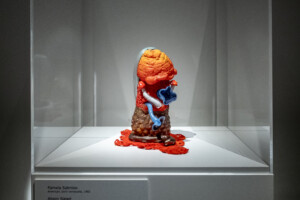
Pamela Sabroso (Venezuelan-American, born 1982), and Alison Siegel (American, born 1987). Psychedelic Corn Smut, 2020. Blown and flameworked glass; synthetic hair. Partial Gift of Heller Gallery, Cafesjian Art Trust 2023.180.3.
Q: What was the most challenging part of organizing From Origins to Horizons?
A: One big challenge was narrowing down the ideas and information I wanted to convey. I wanted to lay out the exhibition thematically to help make it more digestible and therefore hopefully more memorable. How do you talk about this incredible art movement in a way that’s meaningful for our guests? That’s a tough question to pose to yourself at the beginning of the curatorial process.
Q: What do you hope visitors will take away after they see both exhibitions?
AS: First, I hope they’re delighted by the sheer variety of compelling voices and approaches to using glass as an artistic medium. Mostly, though, while we all love the tremendous talent of Dale Chihuly, he’s really the tip of the iceberg when it comes to the rich culture and community of the studio glass movement. I’d like to help like visitors broaden their understanding of all that this important movement encompasses.
To learn more and book your visit to the exhibitions, visit us online HERE.
VISIT
The Cafesjian Art Trust Museum is free and open to the public. Both individuals and groups are encouraged to visit.
Thursdays and Fridays, 10:00am, 1:00pm, and 3:00pm: Tours by Reservation Only.
Fridays drop-in 5:00pm-8:00pm
Click “Book Tickets” to make your tour reservation.
Saturdays, 10:00am–4:30pm: Drop-in any time
Cafesjian Art Trust Museum
4600 Churchill Street
Shoreview, MN, 55126
VISIT
The Cafesjian Art Trust Museum is free and open to the public. Both individuals and groups are encouraged to visit.
Thursdays and Fridays, 10:00am, 1:00pm, and 3:00pm: Tours by Reservation Only
Fridays drop-in 5:00pm-8:00pm
Click “Book Tickets” to make your tour reservation.
Saturdays, 10:00am–4:30pm: Drop-in any time
Cafesjian Art Trust Museum
4600 Churchill Street
Shoreview, MN, 55126
VISIT
The Cafesjian Art Trust Museum is free and open to the public. Both individuals and groups are encouraged to visit.
Thursdays and Fridays, 10:00am, 1:00pm, and 3:00pm: Tours by Reservation Only
Fridays drop-in 5:00pm-8:00pm
Click “Book Tickets” to make your tour reservation.
Saturdays, 10:00am–4:30pm: Drop-in any time
Cafesjian Art Trust Museum
4600 Churchill Street
Shoreview, MN, 55126



